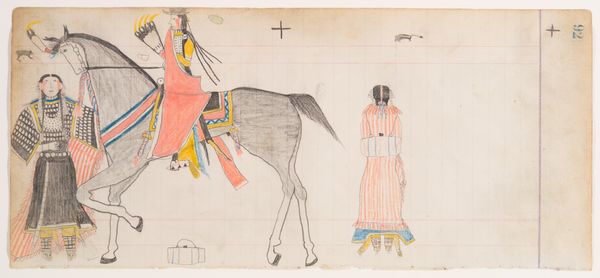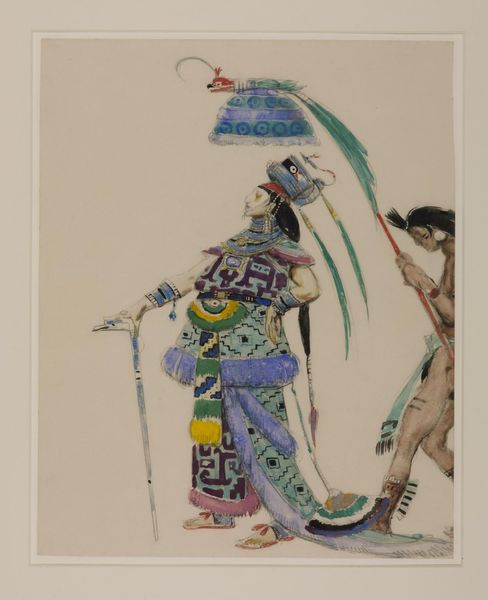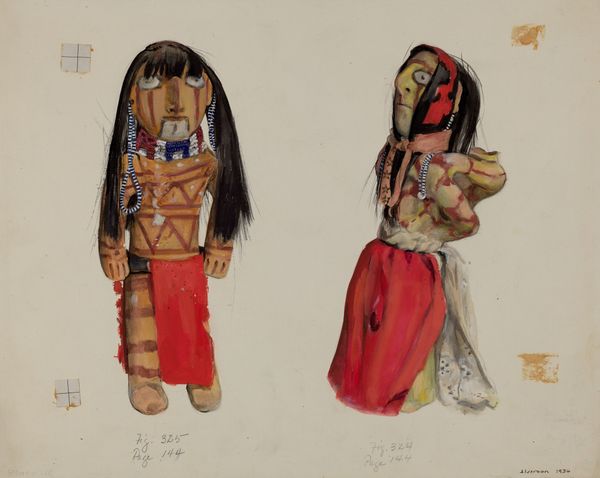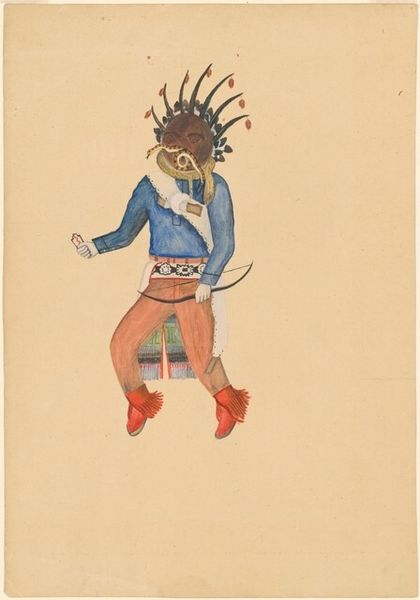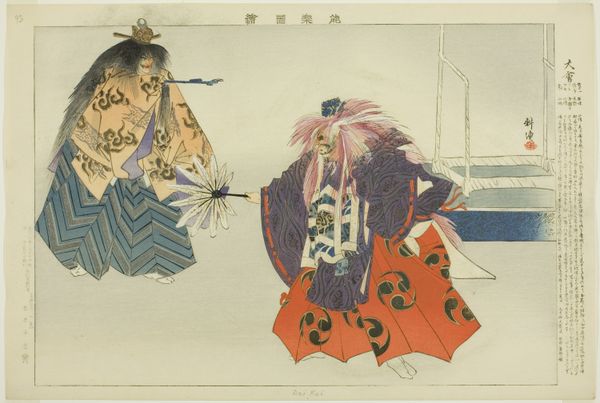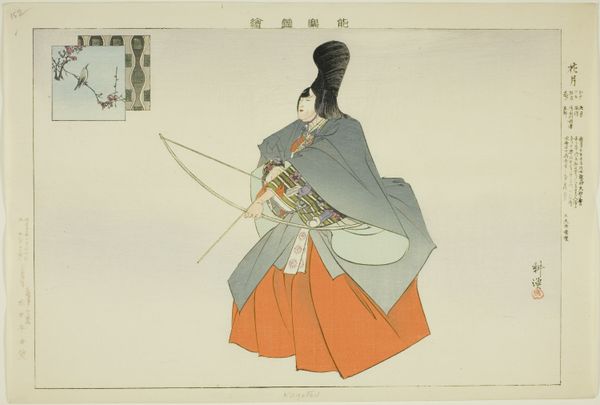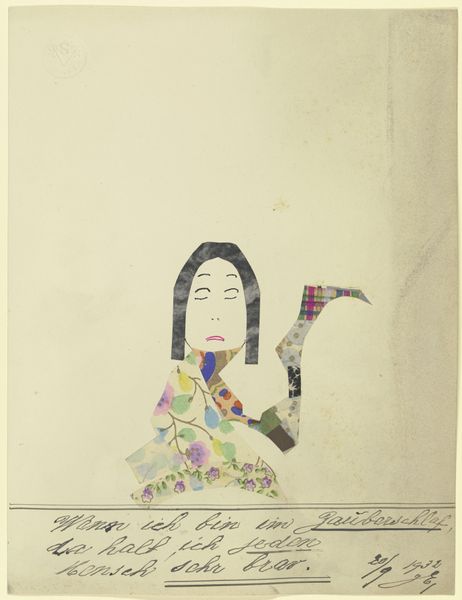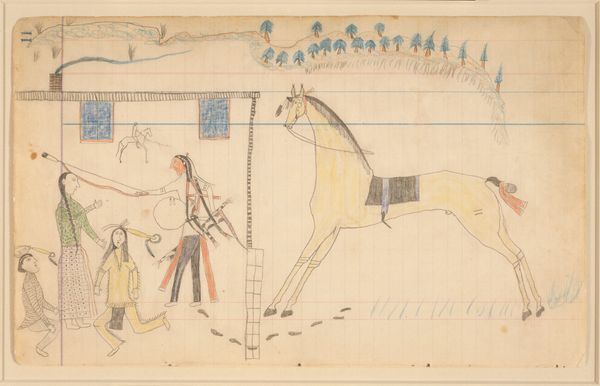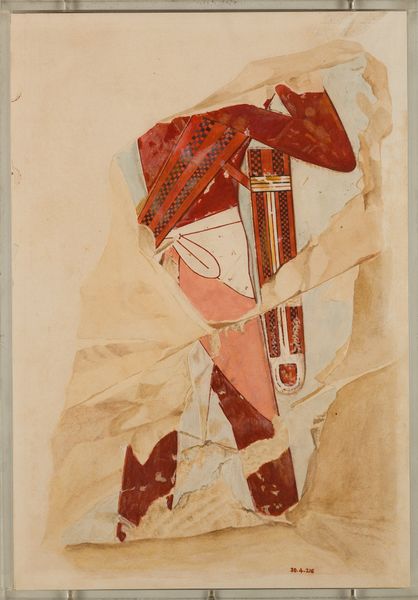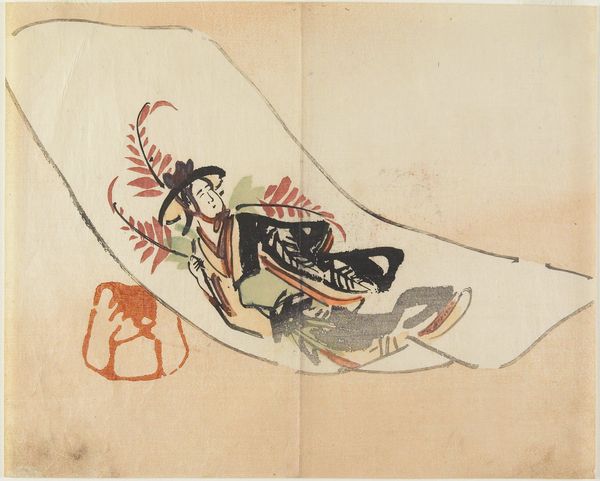
drawing, coloured-pencil, paper
#
drawing
#
coloured-pencil
#
narrative-art
#
figuration
#
paper
#
coloured pencil
#
indigenous-americas
Dimensions: H. 5 3/8 × W. 11 7/8 in. (13.7 × 30.2 cm)
Copyright: Public Domain
Curator: We’re looking at a work titled "Self-Portrait" by Henderson Ledger Artist A, likely created between 1875 and 1885. It’s currently held at the Metropolitan Museum of Art. Made with colored pencil and watercolor on paper, it beautifully showcases a narrative scene. What's your first take on this drawing? Editor: The immediacy is striking; it feels like a visual story unfolding right before my eyes, yet also hinting at deeper narratives of identity and survival in the face of cultural disruption. Curator: Indeed. Notice the compositional elements. The artist’s figure is central, rendered with bright colors that sharply contrast against the subtle background landscape and the ledger paper. The subject dominates the scene in spite of the limited visual resources. Editor: And let's not overlook that this artwork lives on a ledger page. Considering that ledger art emerged from a period of immense cultural upheaval, with Indigenous people confined to reservations and facing the forced assimilation of children, this choice is laden with meaning. Using an instrument of colonial record-keeping becomes a powerful act of self-representation. Curator: The shield is captivating. The intricate circular patterns and vibrant hues of red, yellow, and blue demand visual attention and denote skill. The formal components, the geometrical rendering in this indigenous style are striking. Editor: It’s fascinating how this ‘Self-Portrait’ merges traditional Indigenous artistic practices with the imposed medium of the ledger. The symbolism, though perhaps opaque to us now, speaks to a powerful assertion of cultural presence and resistance in a period of intense oppression. The bright colors are not just decorative, they feel defiant. Curator: A counter-reading might highlight the drawing style, in how lines create visual relationships. The angular shapes suggest an Indigenous art aesthetic while subtly adapting Western conventions for portraiture. It becomes interesting to explore how indigenous cultural knowledge is converted to the new representational style. Editor: Ultimately, viewing this “Self-Portrait,” we must remember that it's more than a mere image; it is a document and a cultural artifact filled with profound resilience. We must strive to consider historical context and semiotics. Curator: By dissecting composition and structure, we understand the delicate artistry, we are left appreciating how symbolic order can coalesce. Editor: Considering how this indigenous form can be applied across other works, to promote conversation, there is much to behold!
Comments
No comments
Be the first to comment and join the conversation on the ultimate creative platform.
